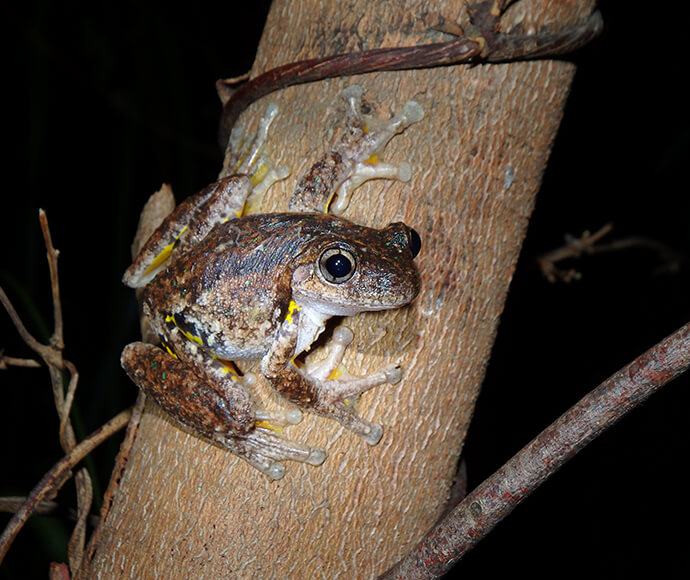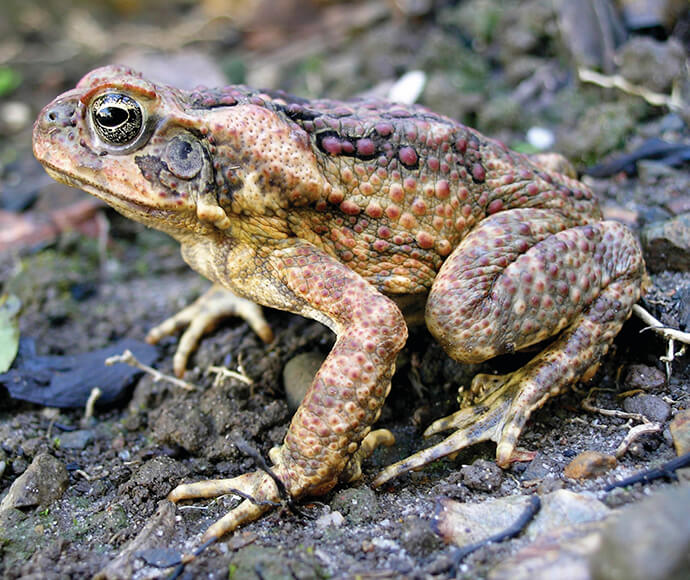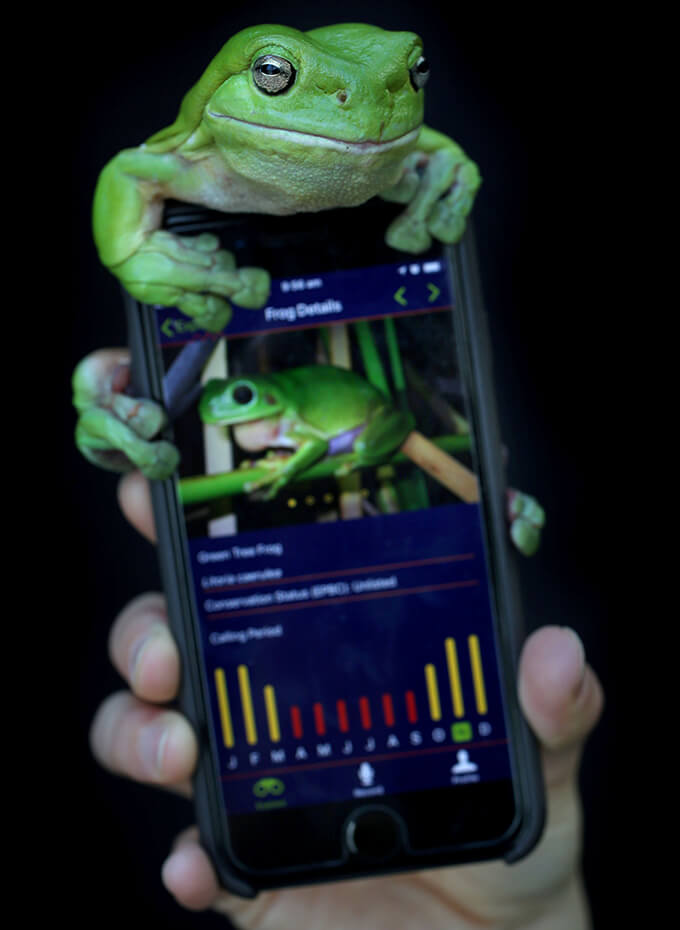Frogs are great for your garden and home. They eat insects like houseflies and maggots, mosquitoes, cockroaches, and spiders.
Frogs can travel large distances to find food and suitable habitats to live. They live on land but return to water to breed.
Frog populations are declining around the world for a range of reasons, including habitat loss and disease. Frogs absorb oxygen and other compounds through their skin. This makes them sensitive to pesticides, herbicides and skin conditions such as chytrid fungus.
In Australia, the introduced and widespread plague minnow (Gambusia holbrooki) fish eat frogspawn and tadpoles, which puts further pressure on frog populations.
Identifying native frogs from cane toadsIdentifying native frogs from cane toads
Native frogs and other animals are impacted by the introduced cane toad.
Cane toads are sometimes mistaken for native frogs, but there are some easy ways to identify a cane toad. For example, cane toads have no finger or toe pads, they have a bony ridge over each eye with a horizontal pupil and are bad climbers.
Peron’s tree frogs, one of our native frogs that some people mistake for a cane toad, do have finger and toe pads, have a distinct cross-shaped pupil and are good climbers.
What frog is that?What frog is that?
The Australian Museum has developed the FrogID citizen science project to help identify and map different frog species by the unique calls they make, or their ‘audio DNA’.
Male frogs use their call to attract females of the same species. These calls are often the most accurate way to identify frog species in the wild as many frogs look similar. You can:
- download the FrogID app
- explore FrogID records and use the interactive map to discover frogs in your local area.
Frogs to watch and listen for in your gardenFrogs to watch and listen for in your garden
You may hear frogs in your garden at night. That’s the male announcing to the female that he’s found a good place for egg laying.
Frogs you’re most likely to see in your garden or local bush include the common eastern froglet, striped marsh frog, the eastern dwarf tree frog and Peron’s tree frog.
Common calls include:
- the striped marsh frog, which has a ‘tock’ call, and sounds a little like a dripping tap
- the common eastern froglet goes ‘crick-crick-crick’.
Listen to more native frog calls.
Help save Sydney’s frogsHelp save Sydney’s frogs
You can help frogs in Sydney by doing a few simple things:
- Plant shrubs and groundcover close together in your garden to protect frogs as they feed and move around.
- Build a frog pond in your garden using frog-friendly plants – find out how with this short guide to building a pond.
- Keep your cats indoors, especially at night when most frogs are active. Put a collar with a bell on your cat.
- Look out for frogs when driving in the rain at night and slow down to allow them to jump across the road.
- Join your local bushcare group and help restore vegetation around local creeks and rivers
- Don’t pollute waterways – wash your car on the lawn, and don’t put oils, paints, and petrochemicals down the drain.
- Don’t touch frogs, or release frogs or tadpoles into other ponds or wetlands – this will help prevent the spread of diseases.
- Download the FrogID app to identify the frogs in your garden and help count Australia’s frogs.
- Map sightings of feral animals in your area
You can create frog-breeding habitat in your backyard by:
- installing a frog pond
- turning your unused swimming pool into a natural one
- allowing some empty pots to fill with water.
Check with your council first: ponds can be a drowning hazard, so you may be restricted in its allowed depth.
When you build your frog pond:
- grow frog-friendly plants around the edges so the frogs can easily move about, hide from predators and keep out of the sun
- fill it with rainwater
- add logs, plants or rocks so frogs can get in and out easily and don’t drown
- add sticks to encourage algae to grow and provide food for tadpoles
- natural food is best, but you may need to provide food like boiled lettuce or fish food if your pond is new
- plant some water plants to keep the water healthy and make sure they're not weeds
- keep fertilisers, herbicides and pesticides away from your habitat and other areas where frogs might live
- watch this video about creating frog habitat.
The green and golden bell frog is a large, plump frog ranging from 4.5 to 10 centimetres long. This frog was common along the coast of New South Wales, but is now a threatened species.
The colour of the frog varies from a dull green when cold, to a beautiful pea-green with brassy brown or golden splotches once it has warmed up.
Green and golden bell frogs prefer to breed in water that is unshaded and free of fish that may eat the eggs and tadpoles.
They breed in summer when it is warm and wet.
Unusually for frogs, they are more active in the daytime. You may see one basking in the sun on plants, rocks or reeds.
Learn more about the threats to the green and golden bell frog and how you can help save threatened species.
Share your pictures
Share your pictures across social media and show us what you’re doing to help Sydney’s native plants and animals.
#sydneynature
#ilovesydneynature
#natureforall


